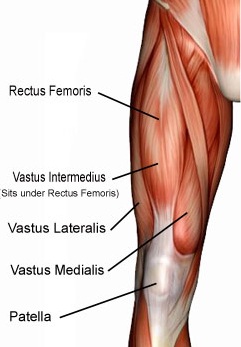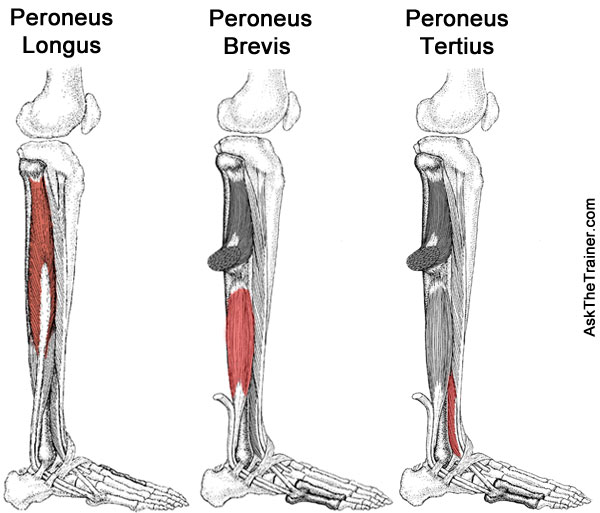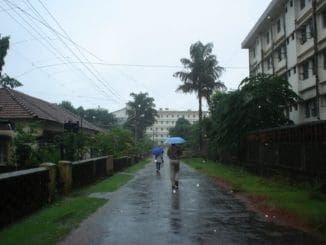To start any kind of discussion about sports and physical activities, you need to know about the anatomy of the body parts involved; in this case, your legs and abdomen. Following are the major muscle groups involved in running, walking, lower body exercises and bicycling:
The Quadriceps
The muscles on the front of the thighs are called the quadriceps. They consist of the vastus medialis, vastus intermedius, rectus femoris and vastus lateralis (4 muscles, therefore quad). As you move your leg forward, you use mainly the quadricep muscles. They bend your hip and straighten your knee.
The quads stabilize the knee and help absorb the shock of impact as you land. The first 5-10 yards of any movement is dominated by the quads and glutes. If you want to be faster off the line, build a strong set of quads.
The Hamstrings
The backs of the thighs contain the hamstrings, which include the biceps femoris, semitendinosus and semimembranosus. These muscles flex the knees, causing your lower legs to move back toward your butt. While running, this takes place when your foot leaves the ground and your leg starts moving forward for the next foot strike.
Strong hamstrings help provide stability to the knee joint by countering the actions of the quadriceps, and reduce the demands placed on vulnerable ligaments, such as the ACL. Strong hamstrings make basic functional movements such as walking more efficient. If you participate in physical activities and sports where speed is required — such as sprinting, soccer and basketball — strengthening your hamstrings can increase your speed. As your speed increases, your running mechanics change. You have a more pronounced back kick, in which your heel moves closer to your buttocks. Moving the heel toward the buttocks is accomplished by the hamstrings. With strong hamstrings, you will be able to move more quickly.
The Gluteals
The gluteals consist of the gluteus maximus, medius and minimus and are located in the buttocks. They help extend the hip, straightening it beneath you. While you run, you build the glutes when your thighs move from a position parallel to the ground to a position behind your body. You will especially notice a contraction of your glutes when you run up hills. Just as important, they stabilize the trunk and keep you upright.
Proper alignment of the pelvis, torso and legs also depend on strong glutes. Strong glutes ensure you keep proper form during running and weight training, especially lower body exercises, so your knees are protected. The gluteus maximus, the largest muscle in the body, can produce an enormous amount of power. Strengthen this muscle to sprint faster, become more agile, jump higher, cycle more powerfully and lift heavier weights during squats and deadlifts. A strong glute complex makes running distances less taxing on your system so you can amp up your miles and train to your highest capacity. Strong glutes support the back as well.
The Calves
The calf muscles consist of the gastrocnemius and soleus and they get worked when your toes point downward. the soleus (inner calf) and gastrocnemius (outer calf) extend and flex each foot as you land and push off. These muscles also help absorb impact and give your stride spring. In similar fashion to the glutes, the calves get more emphasis while running up hills.
The calf muscles act to stabilize your ankles and feet. When your calves are strong, they are better able to provide this service and can help prevent rolling or excessive pronation or supination — in which your foot turns inward or outward, respectively. Your calves work to lift the heel when you run, walk and jump. The gastrocnemius muscle, in particular, is involved in generating power during these activities. Basketball and volleyball players, for example, can increase their vertical jump by targeting the muscles of the calf.
The Hip muscles
The hip muscles are also important. Because they lie deeper than hamstrings and quads, they are often neglected in workouts. The hip flexors get worked when your thighs move toward your stomach. You experience this motion after your foot leaves the ground behind you and your thigh comes upward before the next foot plant. The three parts of the hip flexors are the psoas major, psoas minor and iliacus. Hip flexors and extenders work with the quads and hamstrings to move the legs forward and back.
The hip rotator muscles stabilize the hip joint and contribute to good running form. The hip flexors play a very important role in acceleration and top sprint speed. In sprinting high knee lift is associated with increased stride length and therefore considerable attention is given to exercising the hip flexors. Hip flexor strength is directly relevant to a range of activities in football. Kicking a ball is a complex coordinated action involving simultaneous knee extension and hip flexion, so developing a more powerful kick requires exercises applicable to these muscle groups.
The Tibialis Anterior
The tibialis anterior muscles run down the front of the shins. They get built up when your toes point up instead of down. This motion is called dorsiflexion and it takes place when your leg is in front of your body right before your foot lands on the ground. When you first start running, this area can become sore. This soreness is known as shin splints and will go away as the muscles get stronger.
When the TA muscle is weak, you will not have the strength you should when a) moving the forefoot up & in, b) your ankle will be unstable, and c) there will be some degree of difficulty holding up your long arch (excessive foot pronation) when the foot is put under more stress than the muscle can handle. In more advanced weaknesses, the foot will be unable to hold the long arch up during even mild stress such as weight-bearing. Here are the functional implications associated with a weak TA
The Peroneals
The peroneus longus and brevis run down the sides of the shins and they are known together as the peroneals. These muscles get worked when your heels are elevated which is similar to the calves. If your toes were to turn out, the peroneals would get worked harder.
Strong peroneal muscles help stabilise the ankle joint.
The Abs
The entire rectus abdominis that run along the center of your abs and the oblique muscles along your sides get activated when you run. They contract to give support and balance to the body. The intercostals are muscles found in between the ribs. They also become toned when you breathe heavily during running.
Strong abs increase the stability of your hips, pelvis, and even your knees during running. The result is less strain on your muscles and connective tissues and consequently less chance of injury. Also, by minimizing wasteful movement at the joints, strong abs make your stride more efficient, so you can run faster, longer. Core strength also significantly improves balance, meaning that you recover quickly from missteps both small & large. Core strength for distance runners is especially important. Towards the end of long runs or races, when you are extremely fatigued, your form begins to suffer. Poor form not only slows you down, it also opens you up to potential injuries. For distance runners who are familiar with that lower back ache, building up core strength will help to maintain good posture, and reduce the pains that result from poor posture.
Lower Back
These muscles keep the body erect and help you rotate slightly with each running step, giving your hips and thighs more energy to push you forward.
Upper Back
Strong shoulders keep your upper body relaxed, work with the arms to propel you forward, and help you breathe efficiently. Proper spinal alignment optimizes the function of the lungs and diaphragm.
Here is a video showing exactly which muscles are activated during walking, when and by how much. The same muscles get activated, obviously much more powerfully, while running.
(text source: How Stuff Works and Jillian Michaels, Runner’s World, Healthy Living, Robertson Training Systems, live healthy, brian mac, runkeeper)
Please go like our Facebook Page and also that of the soon-to-be conducted first ever Manipal Marathon. More details in the upcoming weeks!









2 Trackbacks / Pingbacks